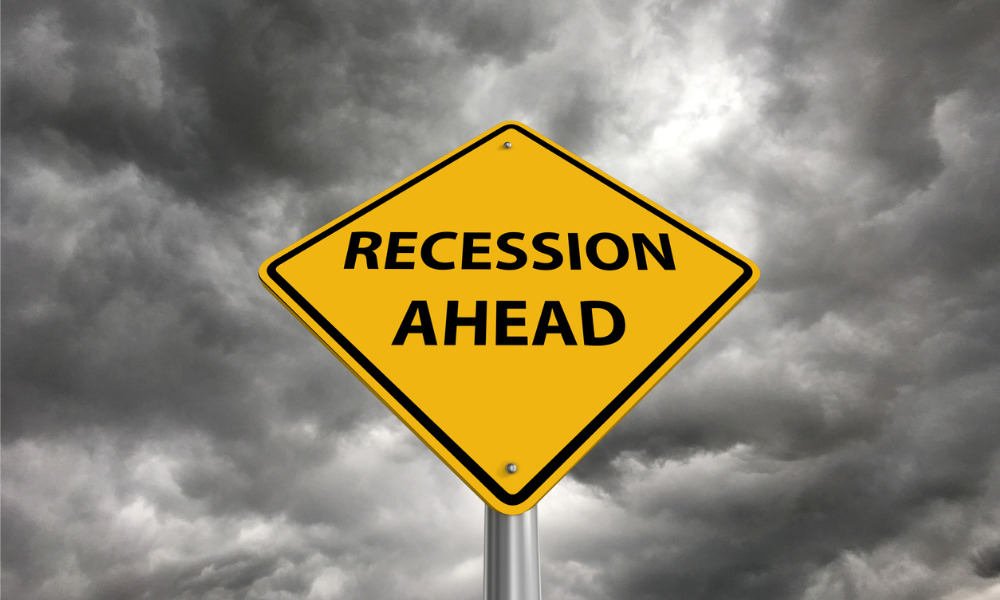Despite progress in Canada's inflation fight, investment industry leaders say hard-landing scenario still on the cards

While the Bank of Canada has made real progress in its campaign to bring inflation down to its 2% to 3% neutral range, it’s too early for investors to wave off the possibility of a hard-landing scenario, according to two investing industry leaders.
“We definitely are still expecting, as a base case, a recession of some sort to hit Canada,” Garey Aitken, chief investment officer, Franklin Bissett Investment Management, told Wealth Professional in an interview.
Bilal Hasanjee, senior investment strategist at Vanguard Canada, says the firm is projecting different economic scenarios for its mid-2023 Canada outlook, with a mild recession as its base case.
“We analyze economic scenarios in a probabilistic framework. As such, currently, we associate about a 65% probability to a mild recession happening towards the second half of 2023, or the first half of 2024,” Hasanjee says. “We’re projecting a 20% chance of a deeper recession, and 15% of a soft landing.”
‘Immaculate deflation’
From his desk as co-lead portfolio manager of the $2.26-billion Franklin Bissett Canadian Equity Fund, Aitken believes there’s a higher likelihood of a hard-landing scenario than what’s currently being discounted in the equity marketplace.
“In the last three or four weeks, when we look at the TSX and the S&P 500, I think more market participants are taking the view that the central banks will be largely successful in working towards their inflation targets, and there will be less rate-hiking than what had been feared a few months ago,” Aitken says. “A lot of people are expecting this Goldilocks scenario of an immaculate deflation and soft landing can take place.”
The past few months’ worth of economic data have brought some encouraging signals. Statistics Canada reported larger-than-expected job gains in June – a net increase of 59,900 jobs, shattering an initial forecast of 20,000. Inflation also looks to be gliding down: from 4.4% in April, headline inflation declined to 3.4% in May, and then went further down to 2.8% in June.
That decline can be attributed in part to base effects. The second quarter of 2022 saw a spike in energy prices following Russia’s invasion of Ukraine, with Canadian CPI hitting a four-decade high of 8.1% in June last year. Now headline inflation is falling off from those record levels, with plunging energy prices driving declines over the past two months.
While Vanguard Canada expects domestic inflation to continue moderating this year, Hasanjee says there are still upside risks. He notes that shelter costs account for a material share of household spending, and the home loan market is dominated by variable and short-term fixed-rate loans.
Interest rates have been the policy lever of choice for central banks to influence prices, as higher borrowing costs are expected to dampen demand. But the BoC’s rate hikes have also helped drive up mortgage interest costs: as observed by RBC Economics, CPI for mortgage interest costs climbed anew to reach 30.1% year over year in June.
“This is a challenge that the Bank of Canada is facing currently. Higher interest rates, which are expected to bring down inflation, are also contributing to higher borrowing costs, which in turn are directly contributing to mortgage costs,” Hasanjee says. “Rents have increased as well, which is not just because of higher mortgage rates, but also because of housing supply shortages.”
The BoC has said it will continue to be data-dependent in setting monetary policy, with the expectation that inflation will come down toward the end of 2023 and beyond. That will be crucial for the central bank to pull off a crucial balancing act: cooling down the economy while minimizing the harmful impact of higher interest rates on the most vulnerable households.
“Canadians are one of the most highly indebted nations in the developed world,” Basanjee notes. “Our household is the highest within the G7, according to 2021 data from the CMHC.”
Lagging effects
Aitken says the effects of monetary policy typically work with a lag, and there’s no reason to expect things to be different this time. Earlier this year, he projected that recession would come for Canada by September or October; that forecast is looking increasingly unlikely, but time and hard economic data will tell.
“The considerable tightening implemented by central banks, including the BoC, has been working its way through the system,” he says. “The BoC started raising rates in the Spring of 2022. When you think about the typical lags of monetary policy effects, I think the rubber’s really going to hit the road in the second half of this year.”
Aitken acknowledges that the Canadian economy has been resilient, but he also points out that the current policy cycle of tightening was preceded by extraordinary fiscal and monetary stimulus prompted by the global pandemic. Consumers were forced to save for an extended period, and those forced savings have helped create an unprecedented wave of revenge spending that persisted in defiance of central bankers’ aggressive rate-hiking.
“Ultimately, I don't think that changes the inevitable ... the central banks are going to get what they want,” Aitken says. “They're going to slow down aggregate demand through higher interest rates, and eventually we're going to see that in economic data.”



